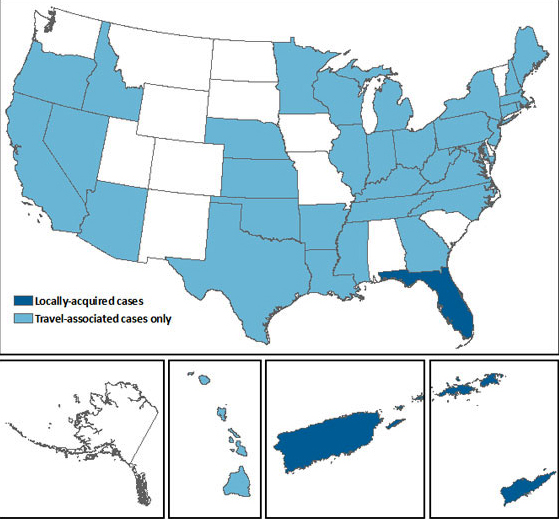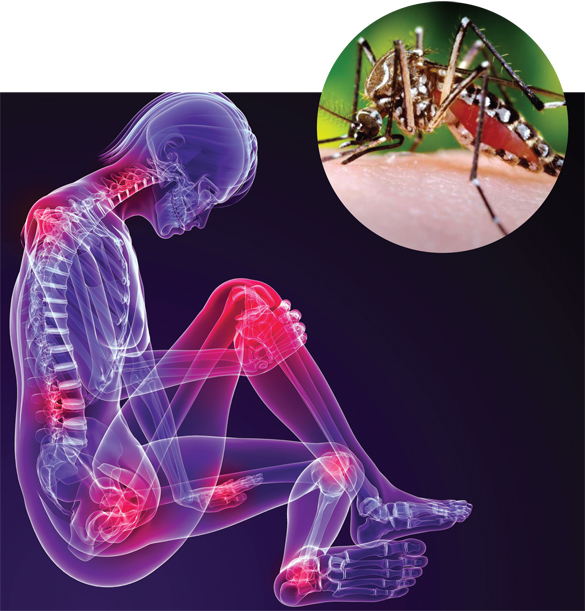 Countries and territories where chikungunya cases have been reported. Courtesy/CDC
Countries and territories where chikungunya cases have been reported. Courtesy/CDC
 Chikungunya virus disease cases reported by state or territory – United States, 2014 (as of July 22, 2014). Courtesy/CDC
Chikungunya virus disease cases reported by state or territory – United States, 2014 (as of July 22, 2014). Courtesy/CDC
 CDC News:
CDC News:
The Centers for Disease Control and Prevention (CDC) has been closely following reports of the mosquito-borne chikungunya (chik-un-GUHN-ya) virus, which is transmitted to people by mosquitoes.
The most common symptoms of chikungunya virus infection are fever and joint pain. Other symptoms may include headache, muscle pain, joint swelling or rash.
In late 2013, the chikungunya virus was found for the first time in the Americas on islands in the Caribbean.
Chikungunya is not a nationally notifiable disease in the United States. However, chikungunya cases can be reported to ArboNET, the national surveillance system for arthropod-borne diseases.
From 2006‒2013, studies identified an average of 28 people per year in the United States with positive tests for recent chikungunya virus infection (Range 5‒65 per year). All were travelers visiting or returning to the United States from affected areas, mostly in Asia. Only a quarter of the cases were reported to ArboNET.
Beginning in 2014, cases have been identified in travelers returning from the Caribbean. As of July 22, a total of 497 chikungunya cases have been reported to ArboNET from U.S. states and territories (Table). There has been 197 locally-transmitted cases reported from Florida, Puerto Rico and the US Virgin Islands. All other cases occurred in travelers returning from affected areas in the Caribbean and South America (N=295), the Pacific Islands (N=4), or Asia (N=1).
With the recent outbreaks in the Caribbean and the Pacific, the number of chikungunya cases among travelers visiting or returning to the United States from affected areas will likely increase. These imported cases could result in additional local spread of the virus in the continental United States.
There is no vaccine to prevent or medicine to treat chikungunya virus infection. Travelers can protect themselves by preventing mosquito bites. When traveling to countries with chikungunya virus, use insect repellent, wear long sleeves and pants, and stay in places with air conditioning or that use window and door screens.
The term chikungunya comes from a word in the Makonde language (spoken in southeast Tanzania and northern Mozambique in Africa) and means “that which bends up,” because patients often are stooped in pain while suffering from the disease. The symptoms resemble those of dengue, another serious mosquito-borne infection that is common throughout the Caribbean islands.
Infection with chikungunya virus is rarely fatal but the joint pain seen with chikungunya can often be severe and debilitating. The virus is not spread person to person. There is no vaccine and no specific treatment for the infection. Patients recover in about a week, although long-term joint pain occurs in some people. Infection is thought to confer lifelong immunity.

